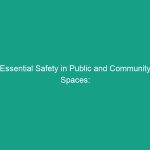Good morning team!
Today, we’re going to discuss a crucial aspect of Safety that impacts our daily operations: the negative side of quick reactions in Safety. This topic is not just about understanding safety protocols; it’s about ensuring that we all can work in a safe Environment without unnecessary risks. Let’s dive into why this is important and how we can avoid the pitfalls of hasty actions in our workplace.
Understanding the Negative Side of Quick Reactions in Safety
Quick reactions in safety refer to the instinctive, often immediate actions we take in response to a perceived danger or emergency. While being swift can seem beneficial, it can lead to poor decision-making and increased Hazards if not thought through properly. Understanding this concept is crucial as it directly affects your safety and the safety of your colleagues.
One common misconception is that quick reactions are always the best responses. In fact, taking a moment to assess a situation can often lead to better outcomes. Rushing into action without a clear plan can exacerbate risks rather than mitigate them.
Key Hazards, Risks, and Safety Considerations
When we react quickly to a situation, several hazards can arise:
- Lack of Assessment: Making snap decisions without evaluating the risks can lead to dangerous situations.
- Increased Error Rate: Hasty actions often result in mistakes, which can compound existing hazards.
- Inadequate Communication: Quick reactions can lead to misunderstandings among team members, increasing the likelihood of accidents.
Real-world consequences of ignoring these safety protocols can be severe. For example, rushing to put out a fire without calling for help can lead to personal injury or property damage. Alternatively, reacting too quickly to a machine malfunction without following proper shutdown Procedures may result in injury or even fatality.
Best Practices, Procedures, & Actionable Advice
To avoid the pitfalls of quick reactions, consider the following Best Practices:
- Pause and Assess: Take a moment to evaluate the situation before reacting. Ask yourself, “What is the best course of action?”
- Follow Established Protocols: Always adhere to the safety procedures that are in place. These are designed to protect you and your coworkers.
- Communicate Clearly: Ensure that everyone involved is on the same page. Use clear and concise language when discussing safety issues.
For instance, consider a situation where a chemical spill occurs. Instead of rushing to clean it up immediately, follow these steps:
- Alert your supervisor and evacuate the area.
- Use the proper materials to contain the spill without exposing yourself to harm.
- Wait for the trained response team to handle the cleanup.
This methodical approach minimizes risk and ensures safety for all involved.
Regulations, Standards, and Compliance
Adhering to safety Regulations is not just a recommendation; it is a legal obligation. Organizations like OSHA (Occupational Safety and Health Administration) and ISO (International Organization for Standardization) set forth guidelines that must be followed to maintain Workplace Safety. Compliance with these Standards is critical to protect employees and avoid legal repercussions.
Understanding the regulations relevant to your job can significantly reduce the chances of accidents. For example, if you’re working with hazardous materials, knowing the necessary handling protocols can prevent dangerous situations.
Employee Engagement & Discussion
Now, let’s open the floor for discussion. How many of you have encountered a situation where quick reactions led to problems instead of solutions? What strategies did you use to rectify the situation? Let’s share our experiences and learn from each other.
Conclusion & Key Takeaways
In conclusion, while quick reactions may seem advantageous in emergencies, they can often lead to greater risks and hazards. By taking a moment to assess situations, following established protocols, and communicating effectively, we can significantly enhance our safety and that of our colleagues.
Remember, safety is a shared responsibility. By prioritizing thoughtful actions over hasty reactions, we can create a safer workplace for everyone. Thank you for your attention and commitment to safety, and let’s keep these discussions going!


